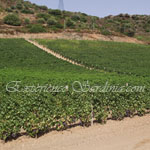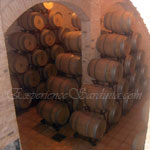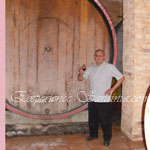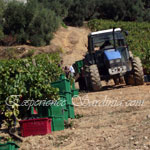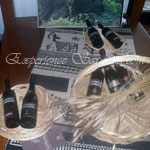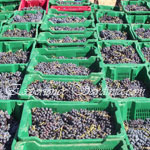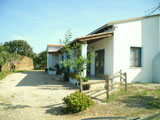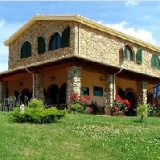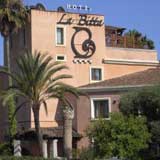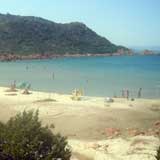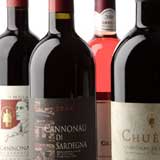Types of Wines
What Makes the Difference in Sardinia
"What types of wines are produced in Sardinia?"
When I embarked on this new project about the varities of wines produced in Sardinia, I thought, hey! No problem...after all wine and making homemade wine has been part of my whole life directly and indirectly, piece of cake!
It wasn't till I went to the winery in Jerzu to pick up some brochures, that I realised it was a little more complicated than simply red and white varities of wines.
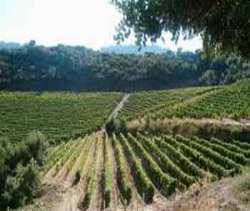
I took the brochures and counted 24 different types of wine.
If one winery is making 24 different wine types, how many different types of Sardinian wine are produced?
At this point I don't know, but I assure you I will find out!
First things first...I took the brochure, looked at the colours of the wines and did my own classification...
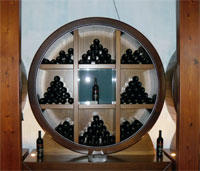
- 13 types of red wines
- 4 types of rosé wines
- 7 types of white wines
That wasn't hard... right?
I wanted to be sure of what I was going to write, so off I went to the winery again. Good job I did... I was totally wrong!
Well not totally as I am not colour blind... that bit I got right!
Every type of wine was different in some way or other that made each one unique.
The first thing I was told was that there was three different styles of wine.
- Superior
- 1st Selection
- Base
He made a point of saying that...Although the three wine styles could make you think that the base wines are of lesser quality, this is not always true. As in the category base wine there are also wines that have been awarded the D.O.C certificate.
Within these three wine styles, the wines are classified according to the Italian wine Classification.
At this point I started to feel really confused... I needed more information! But dare I ask?
Two hours later, I pretty much got the grips of things.
So! What is it that makes types of wines different?
Dare you ask?
Yes... Just be prepared to read to the bottom of the page!
Still with me? Great!
Here goes— types of wine produced in the Jerzu winery Sardinia are;
- Red Wines
- Rosè Wines
- White Wines
- Sparkling wines
- Dessert wines
- Table wines
The different wine types are a result of number things;
I have listed the main factors that play an important role in producing different wine types. I have simplified each of these factors, although each one is a topic on its own. You will find many links to other pages that I believe have been helpful to me in understanding these factors in more depth.Types of grapes
Each type of grapes has its own characteristics;
- Colour
- Flavour
- Acid levels
- Sugar levels
- Tannin levels (for red grapes)
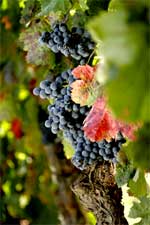
Each varietal is unique because it has a different combination of all these characteristics.
Quality of the grapes
The perfect combination of all these characteristics doesn't just happen by chance. The characteristics of a type of grape is determined by;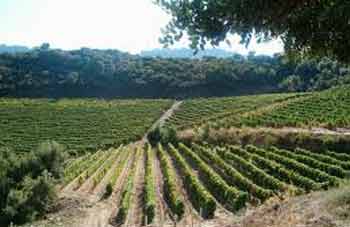
Even the slightest difference of any one of the points mentioned above will have a determinating influence on the wine. A drastic difference all the more...
For example ...if you were to take the Cannonau grape and grow it in England and produce the wine in the same exact way as we do here, the results would be completely different.
Grape Harvest
Harvesting in Sardinia is practically all done by hand. Although it's hard work (boy! Does my back and arms know about it, after a day in the vineyard) the grapes remain more integral when they arrive at the winery using this method.
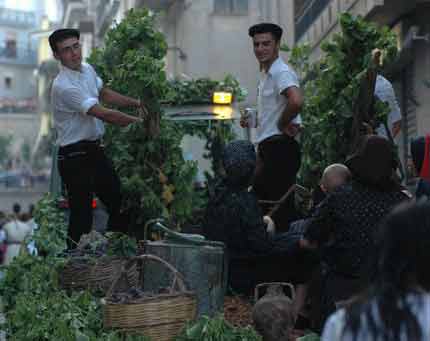
Transportation
There are two different ways that the grapes are transported from the vineyard to the winery.
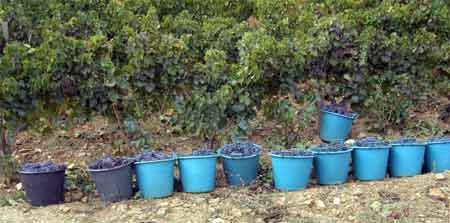
- 1.Is to place the grapes in a pile on the a tractor trailer
- 2.Is to place the grapes into small stackable crates
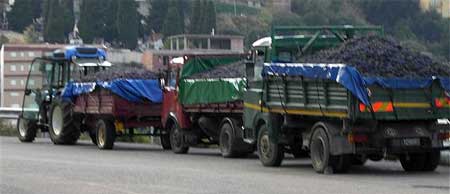
The different type of transportation depends on the type of wine to be made.
For example:
- For a table wine the first method is used
- For a Cannonau di Sardegna D.O.C Riserva wine then the second method is used.
The method of transport makes an enormous difference on the quality of the grapes, therefore also on the quality of the wines.
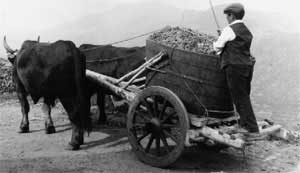
Fermentation
Is the process where the natural sugars in the grapes slowly turn to alcohol. Basically the higher the sugar level the higher the alcohol % of the wine.
When types of wines use a blend of grapes that don't mature at the same time, they are fermented separately.
To make sweet wine the fermentation is blocked before all the sugar turns to alcohol.
Wine undergoes a second fermentation known as Malic Fermentation. It is quite a complex process but basically what happens is the malic acid (a tarty sensation in the mouth) converts to Lactic acid (a smoother sensation). This process produces significant changes in the quality of the wine and makes it more stable.
When the fermentation cycle is completed, the must is separated from the pulp to mature.
Blends
In every winery there is a wine specialist (oenologists) that studies the charateristics and qualities of wine made from the different varietals. His job is to bascially create the perfect balance.
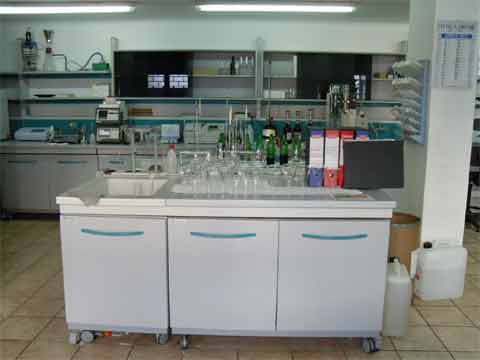
For example:
The Cannonau di Sardegna D.O.C is made from at least 90% of Cannonau grapes (this is a regulation). The 10% that remains is selected from a group of varietals that have been authourized by the region. What actually is that 10% all depends on the results of the tests.
Each type of wine produced has its own unique blend.
Aging
All types of wine have different aging processes.
- Whether the wine is placed in wooden barrels or other containers
- What type of wood is used to make the barrel
- From which Forests the wood originated
- Whether the barrels are toasted or not
- What type of toasting has been applied
- The size of the barrel
The type and size of the barrel and the length of time a wine is left to mature plays an important role in the characteristics of a wine.
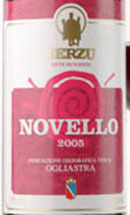
There are some types of wines that undergo very little aging like the Novello wine made in Jerzu.
It is produced in September and it is ready to drink in the November of the same year.
This wine is made from a blend of Cannonau, Carignao,Sangiovese, Monica an Ciliegiolo.
It a fresh and lively wine that is best served at a slightly lower temperature (12-14 C) than the mature red wines.
This wine type is known as a 'young wine'. Every year is it launched with a wine tasting festival in Jerzu in November.
Bottling
I went along to our local winery to have a peep at how they bottled the different wines. It is all done automatically.

There are rules and regulations for the way different types of wines are to be bottled.
The superior quality types of wine are bottled in the 750 ml bottles and have a cork top.
The Italian wine labels that have a pink label over the top of the sealed cork are types of wines that have been awarded the D.O.C.G certificate.
In Sardinia there is only one wine that has been awarded this certificate Vermentino di Gallura.
Table wines are usually bottled in the 2lt bottles and have a screw top but can also find them in the litre version.
All the types of wine stick to the rules and regulations set by the Italian wine region of origin.
The stricter the rules the higher the quality!
Last but definitely not least! (May be I should have put this at the top of the page) is to mention the most antique type of wine, where it all started about 3000 years ago and that is homemade wine. A part of Sardinia's culture and tradition that is widely practiced.
Why not join us on a typical grape harvesting day in Sardinia. See how grape picking is done traditionally especially with families and friends.
More about Wines in Sardinia :
What better way to pair great Sardinia wine than with delicious Italian Cookies.
| Scoop.it | Tweet |
Accommodation Search
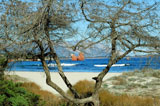 Welcome to
Welcome toRita and Family
Bed and Breakfast
 Welcome To
Welcome To Sardegna Apartments
For Rent By Mario

